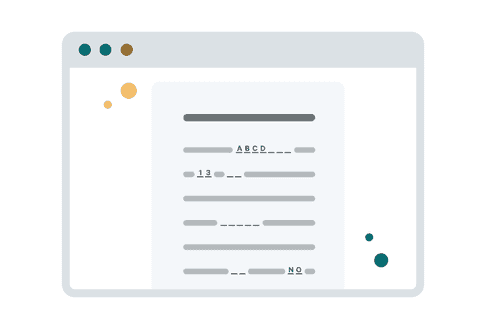Free Livestock Bill of Sale Forms
Whether you are buying or selling livestock, a bill of sale can provide relevant protection for buyers and sellers. It contains the terms that are acceptable for both, preventing confusion and possible dissent in the future. The livestock bill of sale is just one of the necessary documents for finalizing the sale of animals.
What Is a Livestock Bill of Sale?
People buying or selling livestock must sign a bill of sale which functions as a contract for the transaction. It is also a more formal version of a receipt and has a greater legal bearing, especially when notarized.
The following are just some of the animals covered by the livestock bill of sale:
- Cattle
- Chicken
- Goat
- Horse
- Sheep
- Swine
A livestock bill of sale is not a requirement in all states, which is the case in Alabama, Alaska, Arkansas, Iowa and Nevada. However, it is still a good idea to have the document as it provides legal protection for both parties.
How To Sell Livestock
There are a few ways to sell livestock. Some do it through public auctions, while others advertise online through social media and other sites. Most people who sell animals own a farm that buyers frequent to purchase livestock.
Selling livestock means you have a place to raise the animals. The place must be more or less clean, or as clean as a place with animals can be. Buyers prefer to purchase animals that they can see have been raised well.
Take photos of your animals. They should be healthy. Though the photos will attract buyers, most of them still prefer to check the animal in person. Know the market price for your livestock so you can set the appropriate price. It shouldn’t be so high that you won’t get any buyers or too low that you won’t earn a profit. Also, you must determine the lowest price you’re willing to go since buyers like to haggle.
It’s best to be honest with prospective buyers about how you raised your animals. Give them accurate details of your livestock.
When both parties have decided on the transaction, the seller must prepare the bill of sale and other documents necessary to complete the sale.
How To Write a Livestock Bill of Sale
A livestock bill of sale is an essential document that transfers the ownership of an animal. It usually comes with other documents, such as registry papers and veterinary clearance.
Some government agencies have a livestock bill of sale template. But you can also create your own with the following steps:
1. Download a livestock bill of sale template
Not all states require a livestock bill of sale, but most do. Make sure you have a form that follows the state’s format.
Using a template is convenient because the forms have the usual terms and conditions, including spaces that you can fill out detailing the specifics of your transaction.

2. Input the date of the transaction
The date of the transaction is important because it determines when the animal became legally owned by the buyer. While it may seem trivial during the transaction, the information often proves vital should legal impediments arise. Both parties must agree on what date to put on the contract or bill of sale.

3. Identify the parties
The first section of the bill of sale references the buyer and seller. Write these names in the appropriate spaces. Include the mailing addresses of both. These have to be current addresses where they can receive official communications. In some cases, the document will also ask for the parties’ identification numbers.

4. Complete the details
The bill of sale will also ask for the details of what is being sold. The following information is necessary:
- Number of livestock
- Color
- Kind
- Brand
- Weight
- Health
- Vaccinations
- Conditions
- Other relevant descriptions of the livestock
It is also important that the price is reflected in the bill of sale as it could be a cause for contention. The document must also indicate how the buyer will pay the transaction, whether it is cash or check, and if it will be paid in full or by installment.

5. Sign the document
To complete the livestock bill of sale, both parties must sign the document. The buyer and seller must read through the complete details and agree on everything that was stated. The signature part of the document includes the printed name, signatures, and date of signing.
